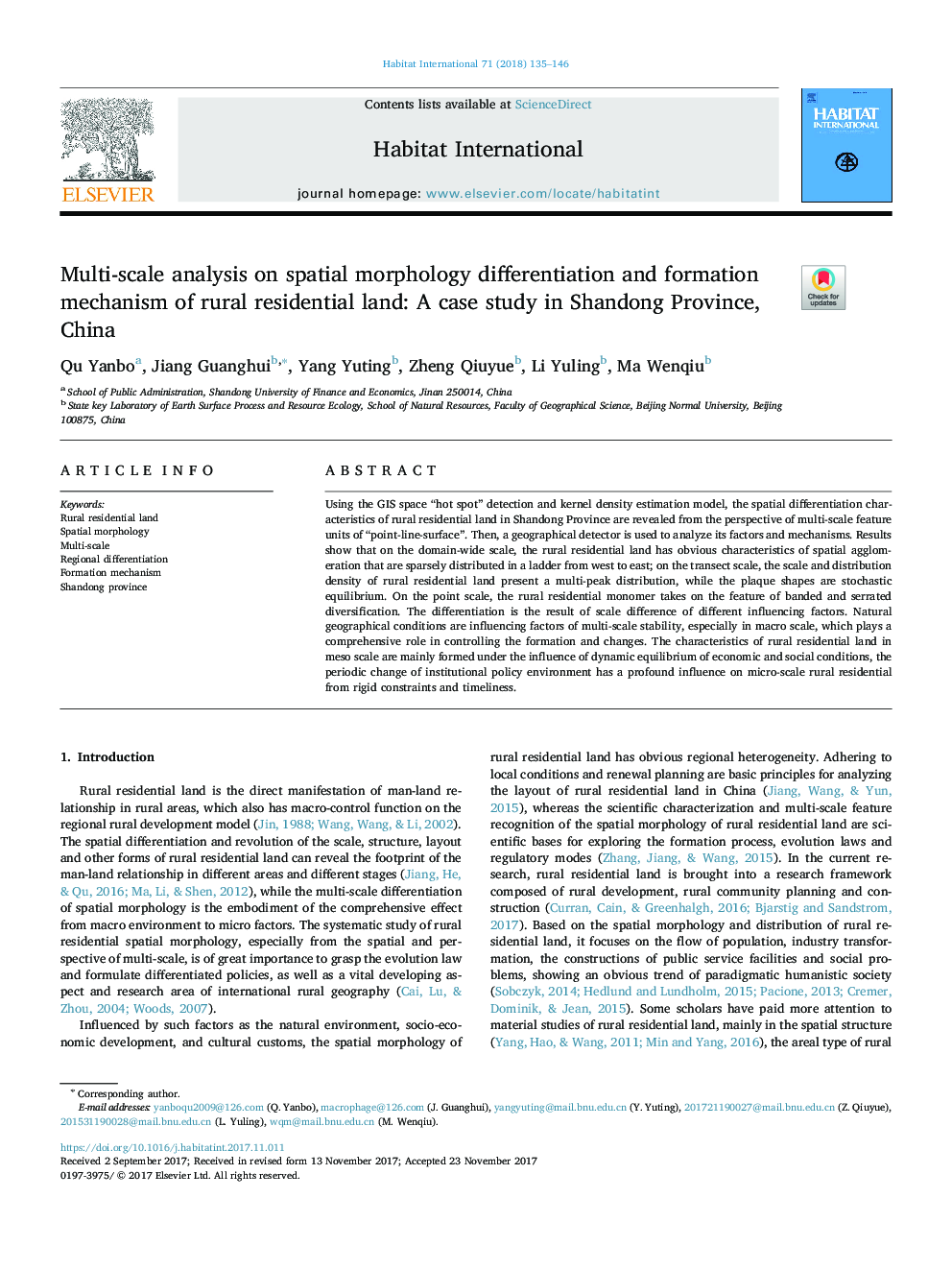| Article ID | Journal | Published Year | Pages | File Type |
|---|---|---|---|---|
| 7455319 | Habitat International | 2018 | 12 Pages |
Abstract
Using the GIS space “hot spot” detection and kernel density estimation model, the spatial differentiation characteristics of rural residential land in Shandong Province are revealed from the perspective of multi-scale feature units of “point-line-surface”. Then, a geographical detector is used to analyze its factors and mechanisms. Results show that on the domain-wide scale, the rural residential land has obvious characteristics of spatial agglomeration that are sparsely distributed in a ladder from west to east; on the transect scale, the scale and distribution density of rural residential land present a multi-peak distribution, while the plaque shapes are stochastic equilibrium. On the point scale, the rural residential monomer takes on the feature of banded and serrated diversification. The differentiation is the result of scale difference of different influencing factors. Natural geographical conditions are influencing factors of multi-scale stability, especially in macro scale, which plays a comprehensive role in controlling the formation and changes. The characteristics of rural residential land in meso scale are mainly formed under the influence of dynamic equilibrium of economic and social conditions, the periodic change of institutional policy environment has a profound influence on micro-scale rural residential from rigid constraints and timeliness.
Keywords
Related Topics
Social Sciences and Humanities
Social Sciences
Development
Authors
Qu Yanbo, Jiang Guanghui, Yang Yuting, Zheng Qiuyue, Li Yuling, Ma Wenqiu,
